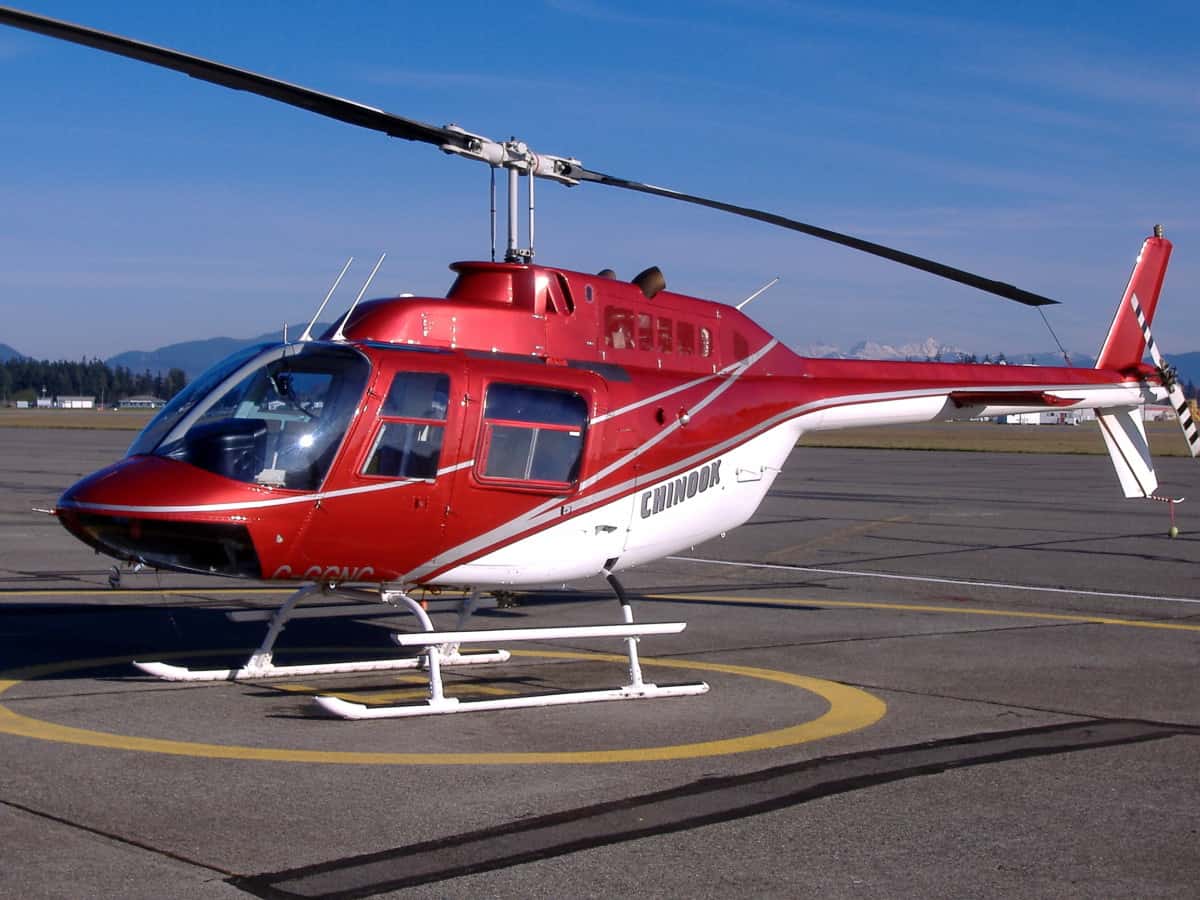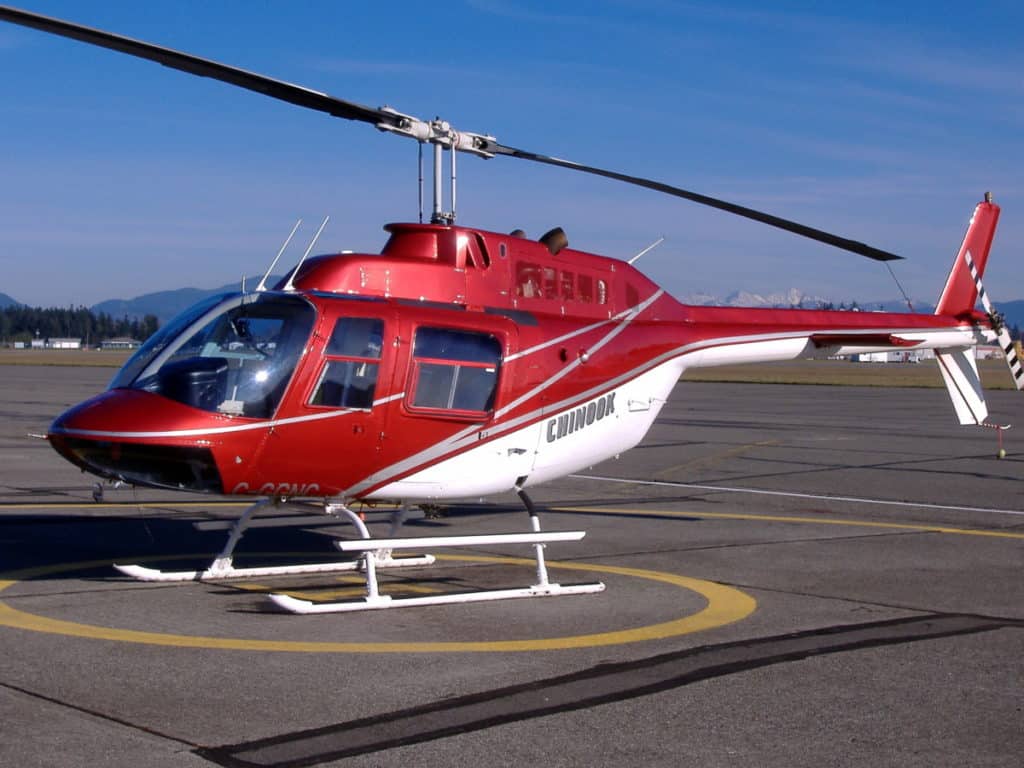
If you have been looking to the skies enough you will have seen that helicopters have to propellors on them. For helicopters, they are referred to as rotors and each set of rotors are made up of individual rotor blades. But why, and what do they do?
Helicopters have a Main Rotor to produce lift and move the helicopter in any direction over the ground. In most helicopters, a Tail Rotor is used to counteract the torque created by the engine and main rotor and prevents the helicopter from spinning. The tail rotor turns the helicopter in a hover.
That’s the basics covered so let’s look at each rotor and exactly what it does and also why helicopters like the Chinook do not have a tail rotor!
Why Do Helicopters Have 2 Rotors?
The majority of helicopters that you see are of the conventional Main Rotor/Tail rotor type. Without both of these rotors, the helicopter would be a boat!
When a helicopter engine begins to turn the transmission, this begins to turn both the Main Rotor and the Tail rotor through a fixed gearing system. The tail rotor cannot turn independently of the main rotor. When one turns so does the other.
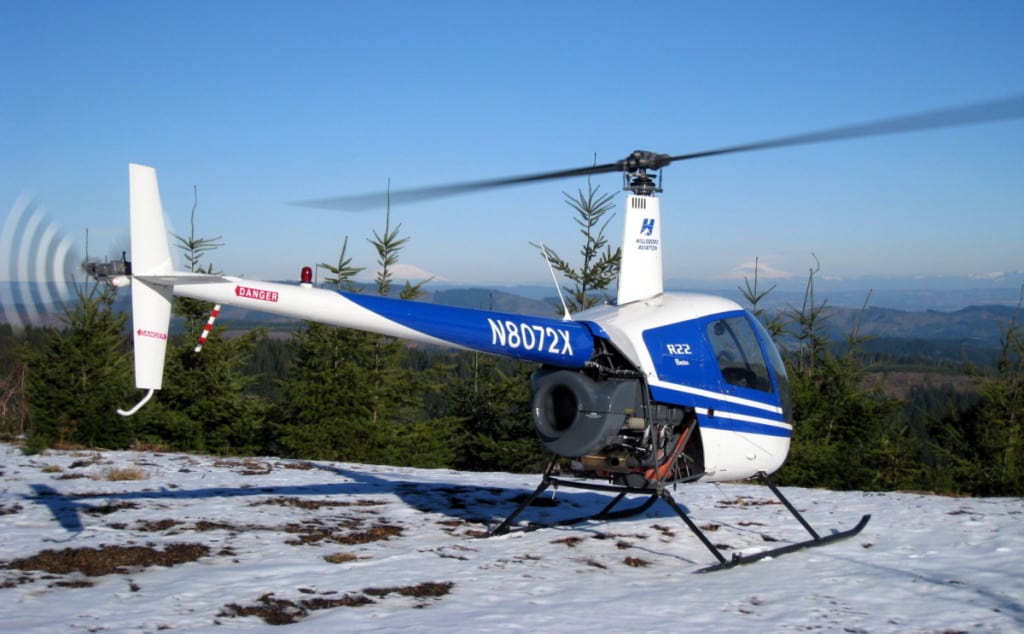
The tail rotor is usually geared around a 3:1 to 6:1 ratio, so for every single revolution of the main rotor, the tail rotor will complete 3-6 revolutions.
As the engine, transmission and rotor system begin to build up speed they become affected by Newtons Third Law:
For Every Action, There is an Equal and Opposite Reaction.
What this means is that as the main rotor turns one way, the fuselage of the helicopter wants to turn the helicopter the other way.
While the helicopter sits on the ground, the friction between the skids or the wheels prevents the helicopter from spinning around.
The second the pilot tries to lift the helicopter into a hover the helicopter fuselage would begin to spin in the opposite direction to the main rotor.
Think of when you are drilling a hole and the drill bit bites. The drill tries to rip itself out of your hand. This is Torque and Newton’s Third Law in action!
To prevent the helicopter from spinning, a tail rotor is installed at the rear of the helicopter to provide horizontal thrust to push the tail of the helicopter in the opposite direction to which it wants to spin. Again, this is Newton’s Third Law working, but in a horizontal force rather than a rotational force.
Think of when you push a paddle through the water in a canoe. You push the paddle towards the back of the canoe, but the canoe moves forward through the water. This is just Newton’s Third Law in action!
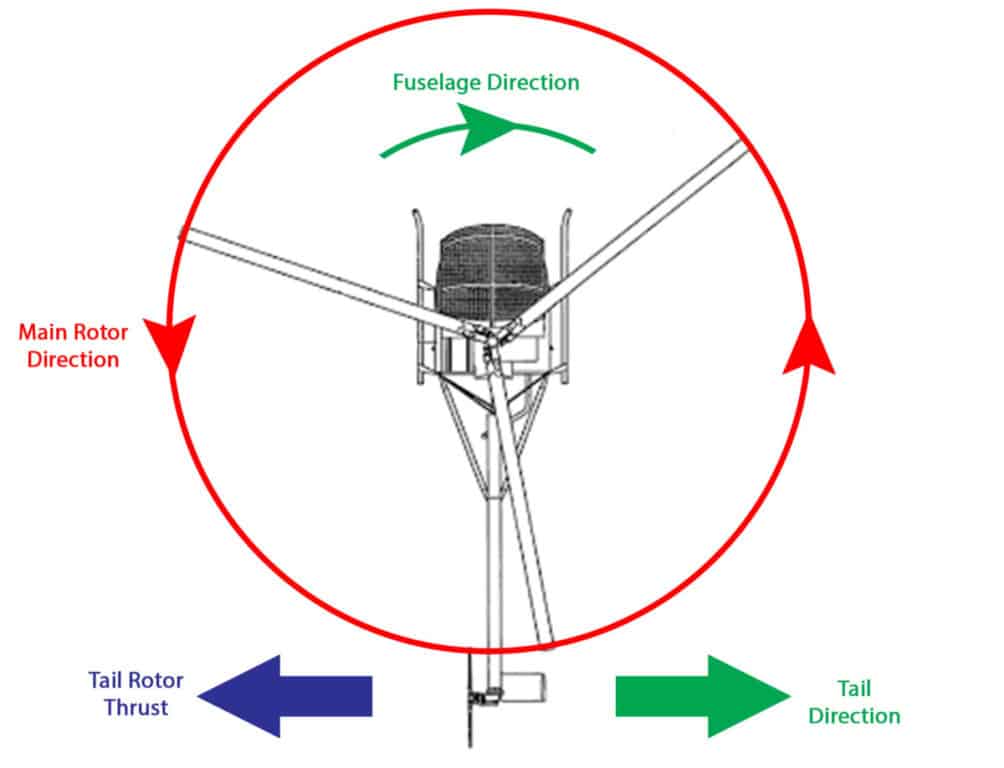
When the thrust produced by the tail rotor is equal to the torque produced by the main rotor, the helicopter will sit in a hover without sending the pilot dizzy!
What Does a Helicopter’s Main Rotor Do?
The main rotor has two functions on a helicopter:
- To create Lift and allow the helicopter to become airborne
- To move the helicopter in the direction required by the pilot
Let’s look at each task individually:
Lift
To get any aircraft off the ground an airfoil or group of airfoils have to produce more lift than the weight of the aircraft.
The weight of the aircraft includes the weight of the helicopter, its fuel, its passengers, its pilot/s, and its cargo. The more weight, the more lift the main rotor needs to produce.
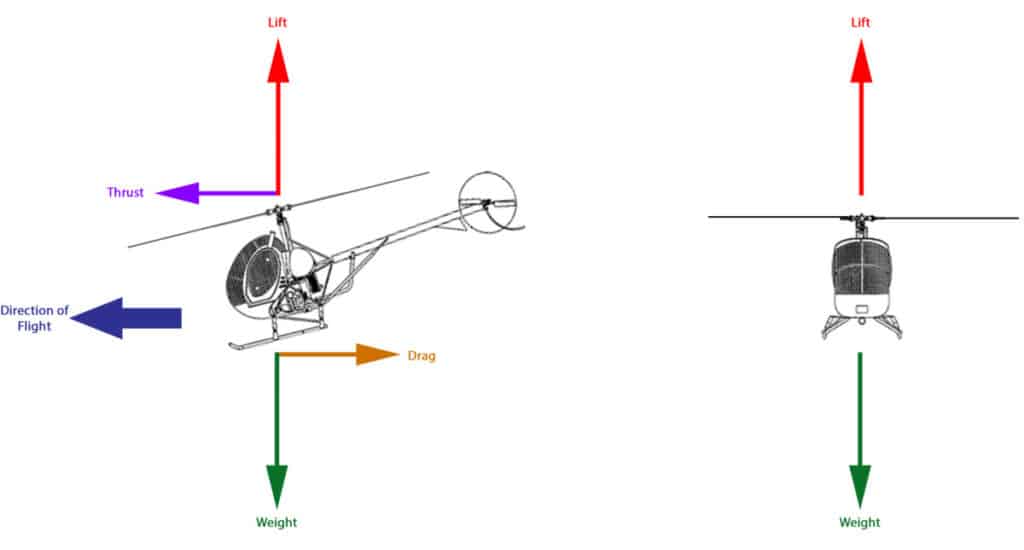
When a helicopter is in a balanced hover or in level flight the lift produced by the main rotor is equal to the weight of the helicopter.
To climb, the main rotor produces more lift compared to weight, and the helicopter climbs.
To descend, the main rotor produces less lift compared to weight, and gravity pulls the helicopter into a descent.
To adjust the amount of lift the main rotor produces, the pilot raises or lowers the Collective Control. This adjusts the pitch angle on all of the main rotor blades at the same time and creates more lift or less lift.
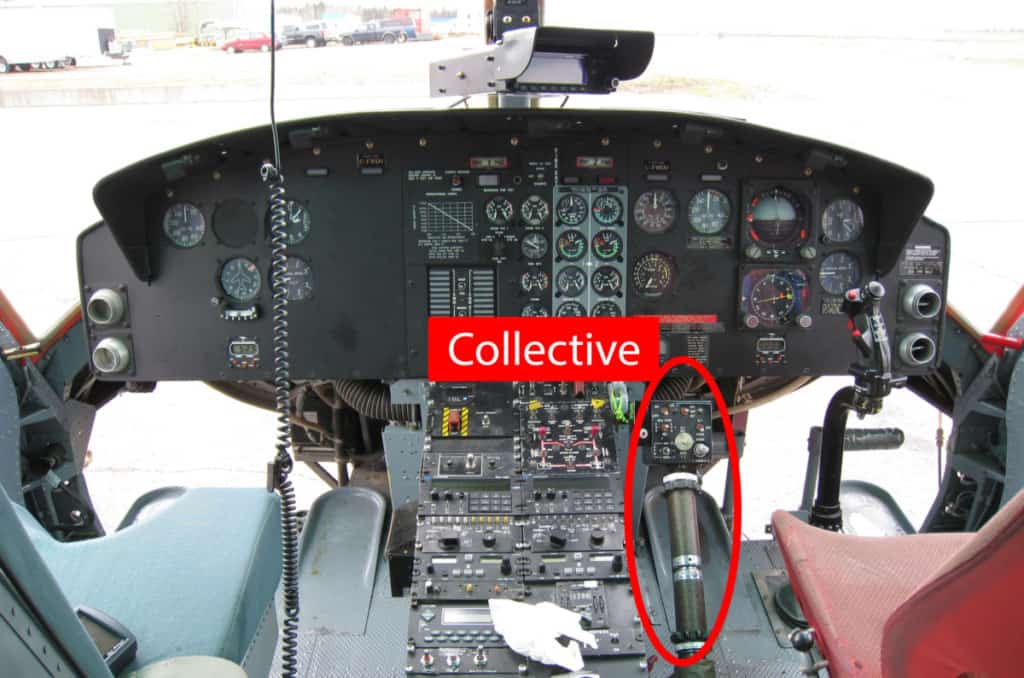
As the Collective is raised, more pitch is applied to the main rotor blades and more lift is produced. As the Collective is lowered, less pitch is applied to the main rotor blades and less lift is produced. When at the desired altitude the pilot does not move the Collective Control.
Direction
The second task of the main rotor is to move the helicopter in any direction over the ground that the pilot wishes. This is the biggest benefit to a helicopter over a fixed-wing: Stable, accurate maneuvering over a spot.
To move the helicopter laterally in any direction, the pilot moves the Cyclic control. This mechanically tilts a device on the main rotor mast called a Swashplate. This swashplate transmits those control movements to each main rotor blade to adjust the pitch of each blade individually. By doing this it ‘Tilts’ the main rotor disk (The main rotor looks like a disk then its rotating).
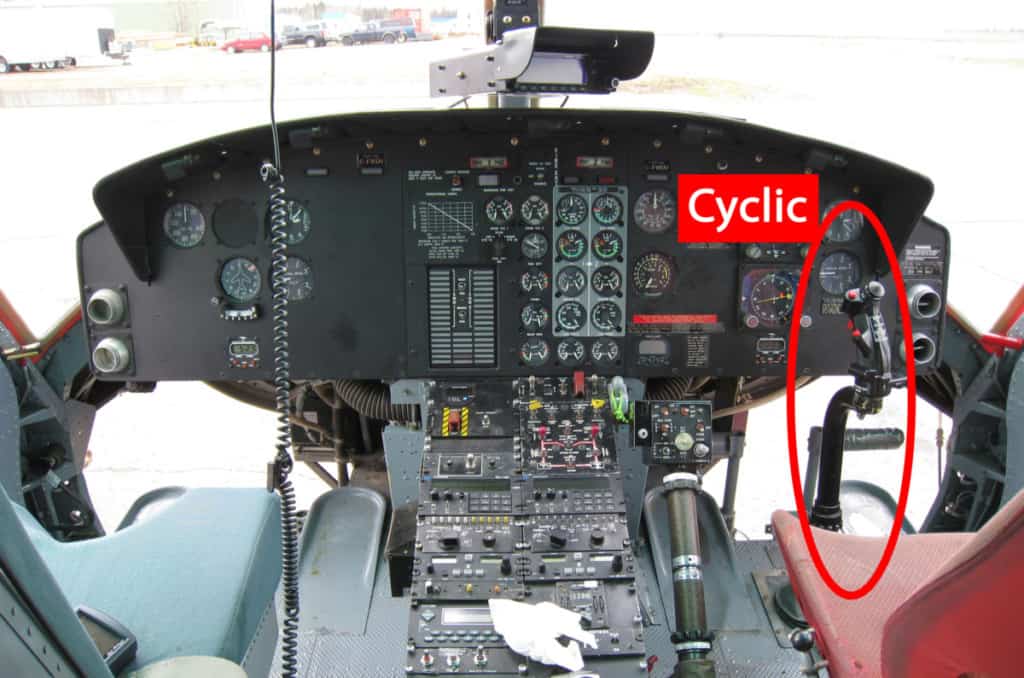
When the disk tilts, it moves the upward acting force vector (Lift) to the side slightly and this makes the helicopter move in that direction until the Cyclic control is moved back to the center. The faster the pilot wants the helicopter to transition over the ground, the more he/she pushes the Cyclic.
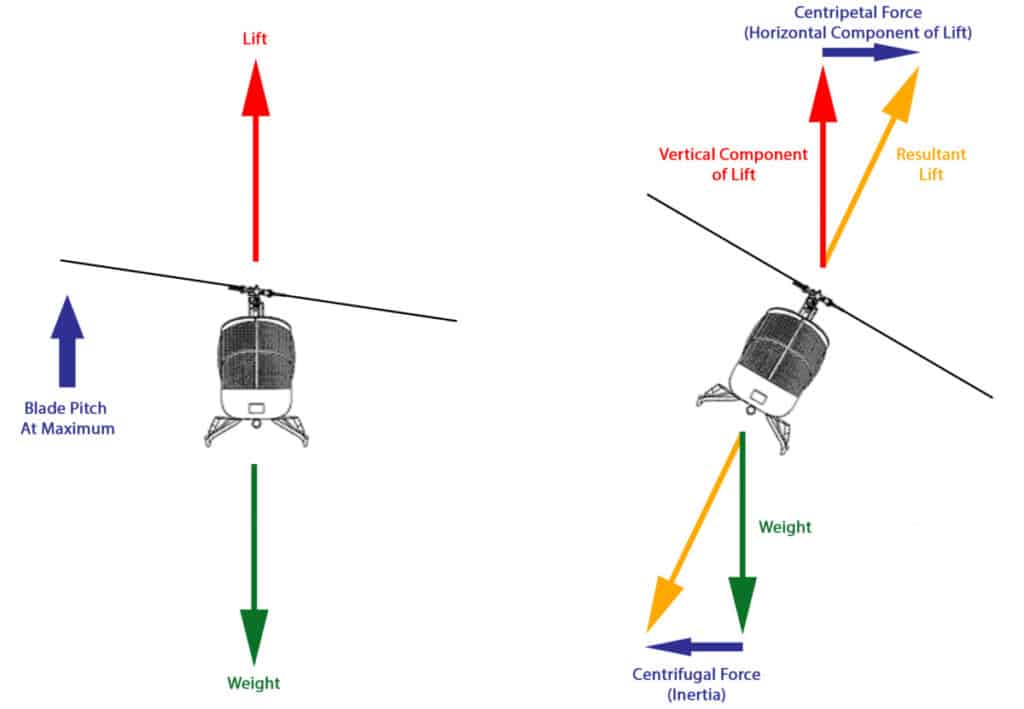
What Does a Helicopters Tail Rotor Do?
The tail rotor also has two functions on a helicopter:
- To create horizontal thrust to prevent the helicopter from spinning
- To turn the nose of the helicopter when in a hover and forward flight
Let’s look at each task individually:
Horizontal Thrust
As mentioned earlier, the main job of the tail rotor is to balance out the rotational torque created by the engine turning the main rotor. It is known as an ‘Anti-Torque Rotor’ for that reason.
To do this, the smaller tail rotor creates lift but in a horizontal direction – this is called Lateral Thrust. As the tail rotor turns, the pilot controls how much thrust it produces by adjusting the pitch of all the tail rotor blades together, just like the Collective on the main rotor.
To adjust the pitch of the tail rotor blades the pilot pushes on the Pedals. They act like a Teeter-Totter. When the pilot pushes on the left pedal the right pedal moves forward and vice-versa.
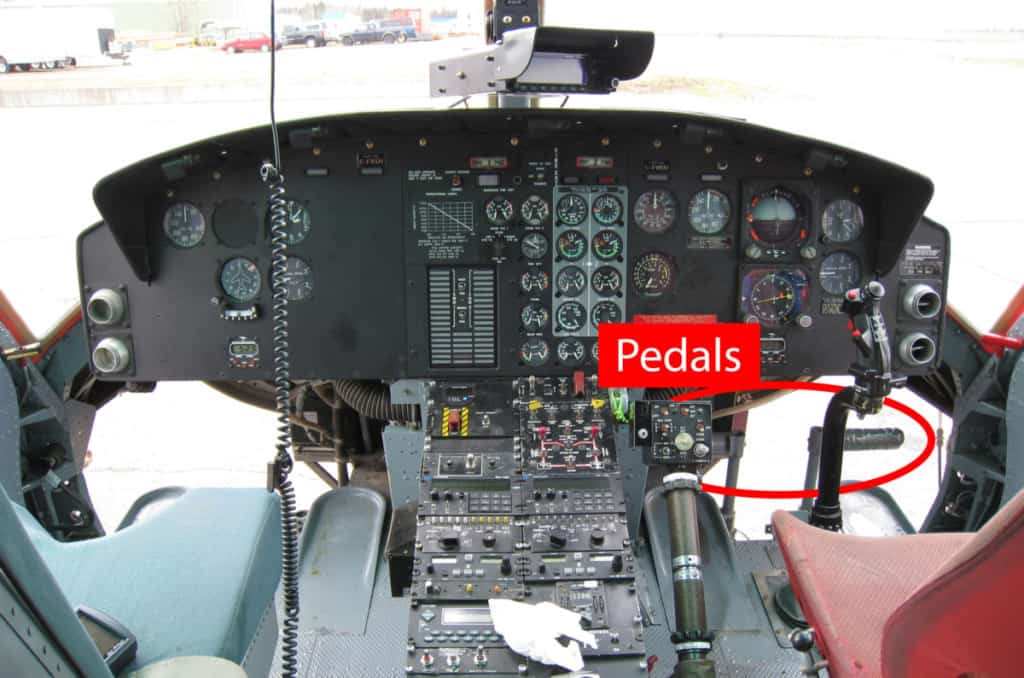
To pick up a helicopter into a hover the thrust being produced by the tail rotor must equal the torque from the main rotor. If they are not matched the helicopter will start to rotate. More pitch on the tail rotor blades = More thrust produced.
Tail rotors are a lot smaller than main rotors as the force to match the torque of the main rotor is a lot smaller than the lift required to get the entire helicopter airborne. This is also the reason why they rotate faster. Lift is affected by the rotational speed of a rotor blade. The faster it rotates the more lift it produces, so the smaller each rotor blade can be.
This is about as simple as I can keep it without getting deep into aerodynamics.
Turning
The second job of the tail rotor is to control the direction the nose of the helicopter points, and thus the direction the pilot and passengers face.
We know that when the tail rotor thrust matches the main rotor torque the nose does not move.
This next part assumes the main rotor of the helicopter rotates counter-clockwise when viewed from above:
When in a hover, if the pilot wants to turn the nose to the right, they push the right pedal. Via a mechanical linkage, this moves the tail rotor blades to reduce their pitch angle, which decreases the thrust they produce the torque overcomes the tail rotor thrust and the helicopter nose begins to rotate right.
To stop the turn the pilot centers the pedals.
If the pilot wants to turn the nose to the left, they push the left pedal. Via the mechanical linkage, this moves the tail rotor blades to increase their pitch angle, which increases the thrust they produce and the thrust overcomes torque and the helicopter nose begins to rotate left.
The more pedal movement the pilot gives, the faster the nose rotates.
Learn More…
Try These Articles:
* What Is A Helicopter Blade Made of? It Used To Be Wood!
* This is Why Helicopters Have Different Numbers of Rotor Blades?
Can Helicopters Fly With No Tail Rotor?
If a helicopter loses control or power of its tail rotor it can usually be flown and landed safely providing the pilot is able to maintain a high airspeed and has a clear area to land in. The forward speed allows the vertical fin to act like a rudder keeping the helicopter straight until landing.
Because the job of the tail rotor is to counteract the torque, when it develops an issue the pilot must respond accordingly. Pilots are trained to deal with tail rotor failure and there are two types:
- Loss of drive to the tail rotor
- Loss of pitch control to the tail rotor
Depending on the type of malfunction, the pilot may be able to land the helicopter safely or it could be an unavoidable crash. If the pilot is in forward flight and develops a fault, they can use the vertical stabilizer on the rear of the helicopter to act like a rudder and complete a ‘Run-on’ landing in a flat, clear opening similar to how an airplane lands.
If the pilot is in slow flight or a hover they need to immediately cut the power to the engine and hope the spin does not develop too much and try for a controlled landing.
The time, location, and regime of flight will dictate if the pilot stands a chance of having a successful landing.
Why Do Some Helicopters Have No Tail Rotor?
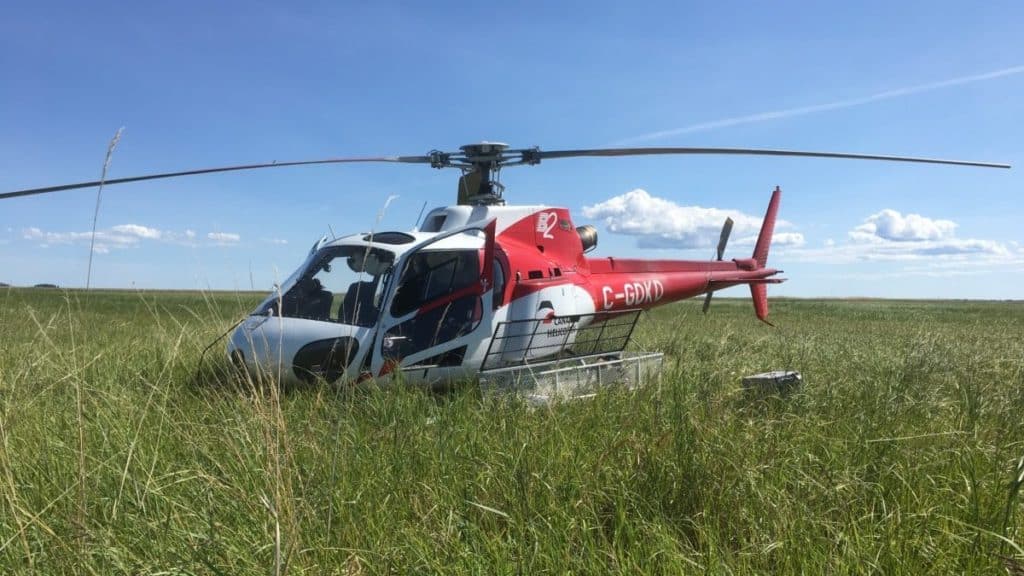
Helicopters with no tail rotor have a different kind of torque canceling design built into them. Contra-rotating rotors like the Boeing CH47 Chinook or a NOTAR system like an MD 902 Explorer are the two main types of anti-torque systems that don’t use a conventional tail rotor.
A tail rotor is a very vulnerable and dangerous part of the helicopter. When flying a helicopter into an unprepared landing site the tail rotor can easily make contact with a bush, tree, rock, stump, post, or similar and lead to a tail rotor failure.

Join My Newsletter & Get Great Tips, Information and Experiences To Help You Become a Superb Pilot!
When flying into areas where people are present the risk of someone running into the tail rotor is extremely high as it disappears when it’s at full RPM. There are numerous videos and stories of people walking into a tail rotor!
Because of this, manufacturers have looked into other ways to design a system that creates anti-torque but in a different way, usually with increased performance and reduced noise output.
What Are the Different Types of Helicopter Anti-Torque Systems?
Anytime something is in the air and has a rotating part, something needs to stop the other half of it from spinning in the opposite direction, the helicopter is no different.
There are Four Main Types of Helicopter Anti-Torque Systems:
- Conventional Tail Rotor
- Contra-Rotating Rotors
- Fenestron
- NOTAR
Contra-Rotating Rotors
These helicopters consist of two main rotors. Each main rotor turns in the opposite direction to one another so the torque imparted on the fuselage by one main rotor is canceled out by the torque imparted by the other main rotor.
These two main rotor systems are all fed off the same gearbox so they both rotate at the same speed and this cancels out one another.
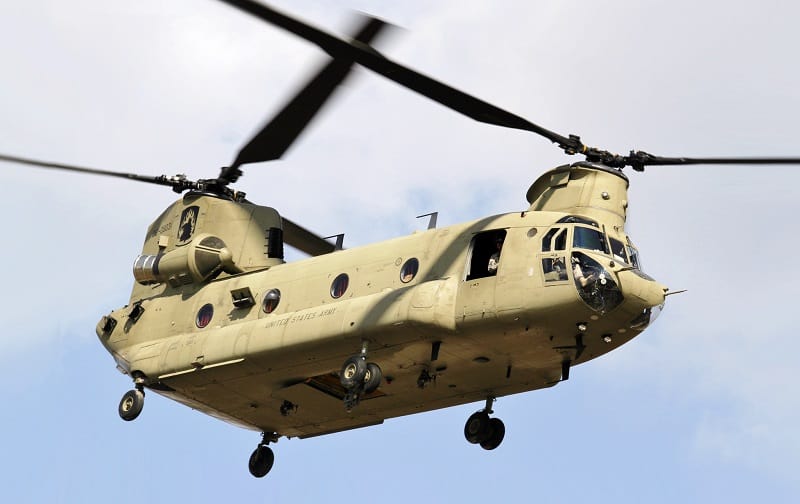
Longitudinal Main Rotors like those on the CH-47 Chinook intermesh so the blades never make contact.
Lateral Main Rotors like those on the Kaman K-Max also intermesh so the blades never make contact.
They are mesmerizing to watch especially on startup!
Stacked Main Rotors are a common site on Kamov (now Russian Helicopters) helicopters.
The two main rotors are stacked and the gearbox and flight controls are some serious engineering if you get close enough to see one!
Fenestron
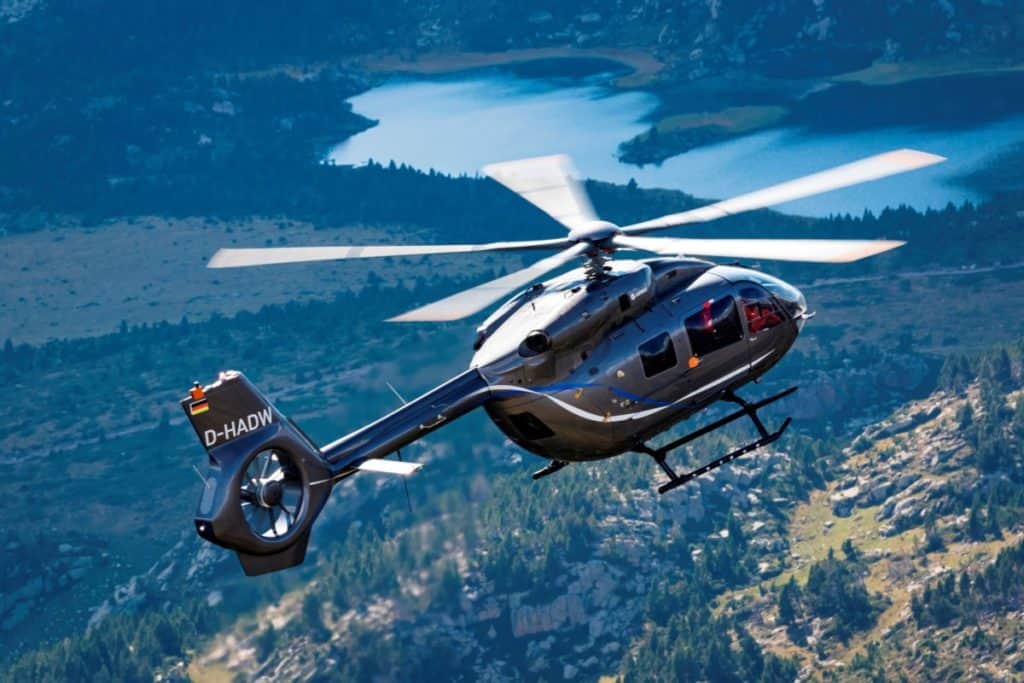
The Fenestron is a Trademarked Anti-Torque system used on many Eurocopter, now Airbus Helicopters.
The principal works by placing a multi-bladed fan within a duct in the tail of the helicopter. The Fenestron design allows for several improvements over a regular tail rotor:
- Smaller tip vortices on the ends of the fan blades help maximize thrust produced
- Huge reduction in noise compared to a traditional tail rotor
- Shrouded design allows a safer working area for crews with rotors turning
- Shrouded design helps minimize tail rotor strikes when landing at unprepared helipads
NOTAR
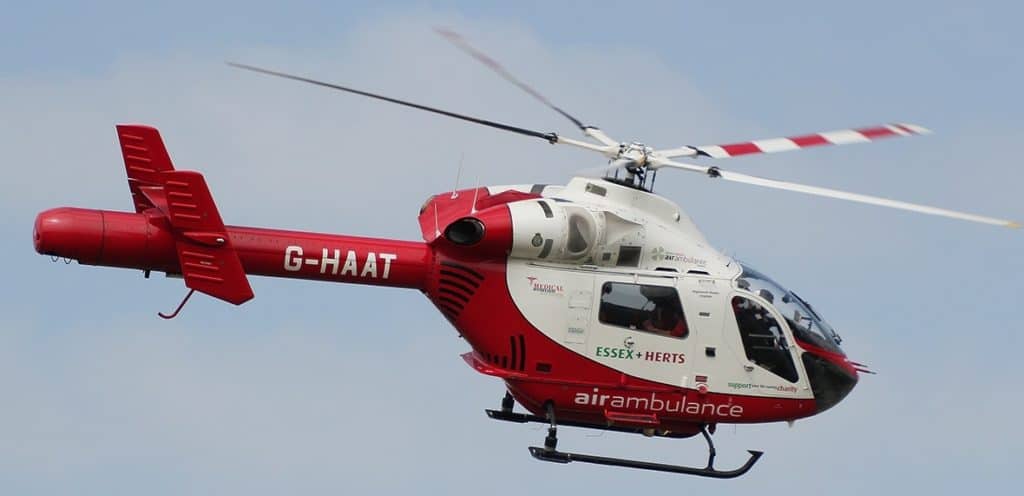
NOTAR stands for No Tail Rotor and it is exactly that. Developed by Hughes Helicopters in the 1970’s, the patent is now owned by MD Helicopters after their acquisition of Hughes in the mid 1980’s.
The NOTAR system comprises of a variable pitch fan mounted inside the tail boom to produce large volumes of low-pressure air that exit through horizontal slots on the right side of the tail boom and a Jet Thruster at the end of the tail boom.
- Air Intake for Fan
- Variable Pitch Fan
- Tail boom with Horizontal Coanda Slots
- Vertical Stabilizers
- Direct Jet Thruster
- Main Rotor Downwash Path
- Cross-Section of Tail boom
- Anti-Torque Thrust
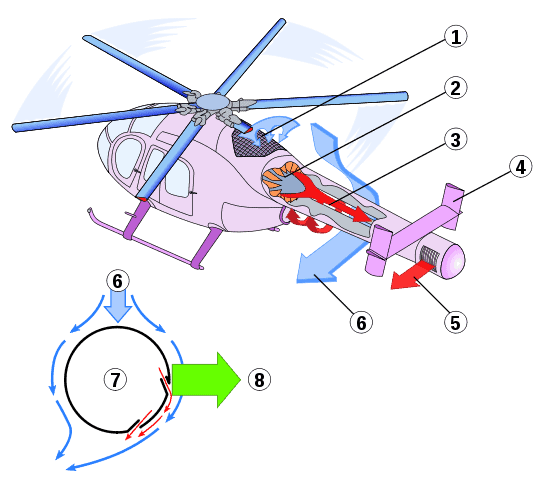
This low-pressure air released down the length of the tail boom creates a Coanda Effect around the tail boom and acts as a venturi to pull the downwash from the main rotor around the tail boom and exit off to the left. This creates an area of low-pressure on the right side of the tail boom, pulling the entire tail boom to the right, counteracting the torque from the main rotor.
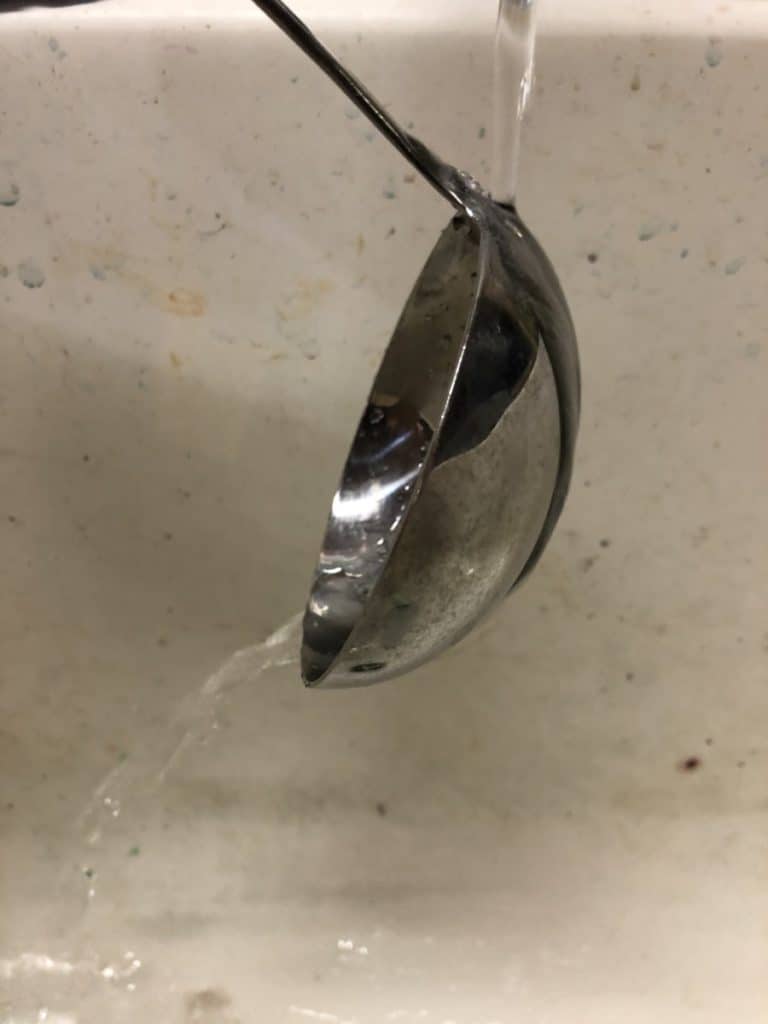
Directional control is accomplished by a rotating drum on the end of the tail boom which the pilot controls with pedals. This Jet Thruster is enough to increase thrust or decrease thrust produced by the tail boom to allow the aircraft to rotate.
Just like the Fenestron, the NOTAR system gives similar improvements over a standard tail rotor:
- Quietest Anti-Torque system on any helicopter
- No external rotating parts allow for improved working safety around aircraft.
- No rotating parts to hit when landing at unprepared landing sites.
To Finish
So there we have it, most helicopters have two rotors, but the NOTAR system on MD helicopters are the only helicopters that do not have two rotors. I tried to keep the explanations as simple as possible because you can probably imagine we have only just scratched the surface on how physics and aerodynamics work on a helicopter and the mantra of this whole website is:
Everything Aviation – Simply Explained
Torque is just one of the things that all helicopters have and thanks to Mr. Newton and his Third Law, it creates some design challenges in the helicopter drawing offices (Showing my Age Now!) when the company wants a new helicopter.
No matter which Anti-Torque system the manufacturer uses, without it the pilot would be dizzy in seconds.
Further Reading
If you found this article interesting and would like to keep reading, I highly recommend the following articles from my blog:

